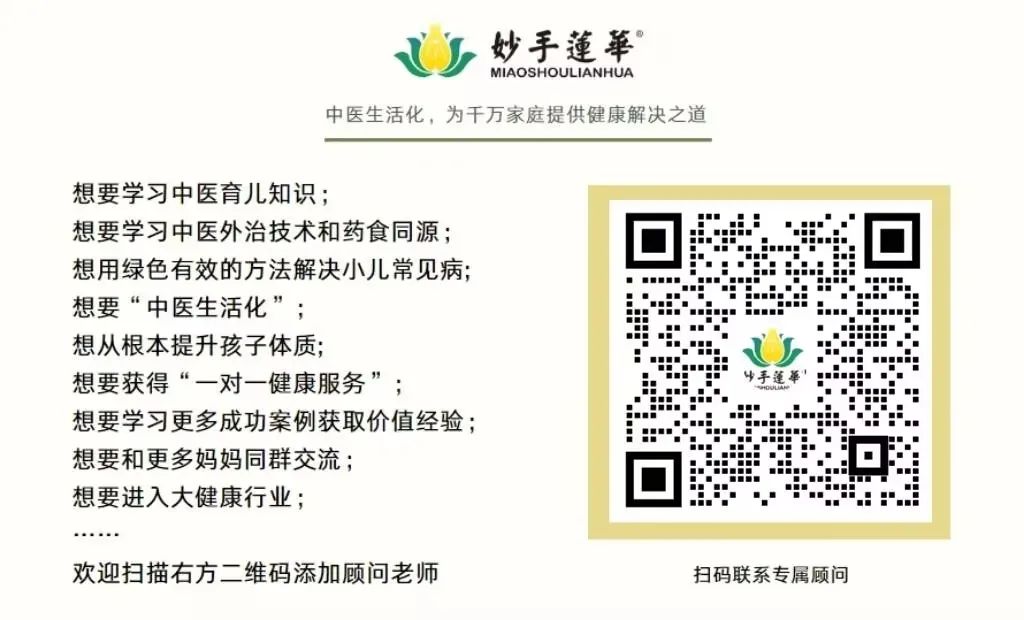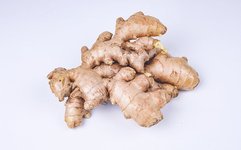Before the major heat of summer, we published an article titled “As Major Heat Approaches, Prepare to Sun-Dry Fu Jiang!” Many friends wanted to know how to use the sun-dried Fu Jiang effectively. Some even thought that the dried Fu Jiang was just the common Gan Jiang found in prescriptions. In daily life, we often buy Xian Jiang and Lao Jiang; do they have the same effects? How can we use them to maximize their value? Today, we will answer these questions.
✦✦
01
First, we need to clarify: Gan Jiang is not simply sun-dried ginger.
Ginger is divided into two main categories: Sheng Jiang (fresh ginger) and Gan Jiang (dried ginger).
Sheng Jiang refers to the ginger we can buy in the market for cooking, which is generally divided into Lao Jiang (old ginger) and Xin Jiang (young ginger).
Lao Jiang, commonly known as Jiang Mu (mother ginger), has a rough, thick, and yellowish-brown skin, with less moisture and more fibers, resulting in a strong and spicy flavor when cut.
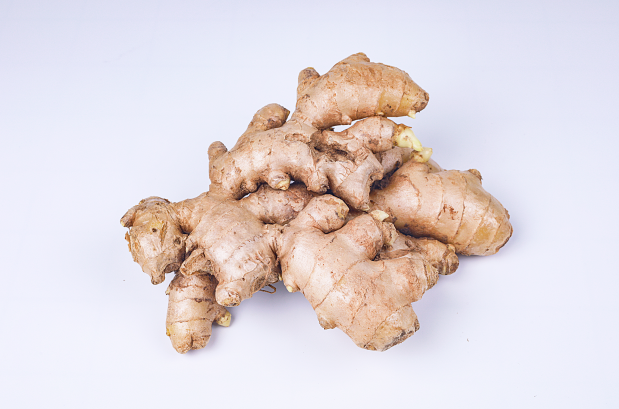
Xin Jiang, also known as tender ginger or fresh ginger, appears fresh with a smooth surface, tender skin, and a whitish color, often with red tips and small ginger shoots. It has high moisture content and almost no fibers, making it crunchy and mild in flavor.
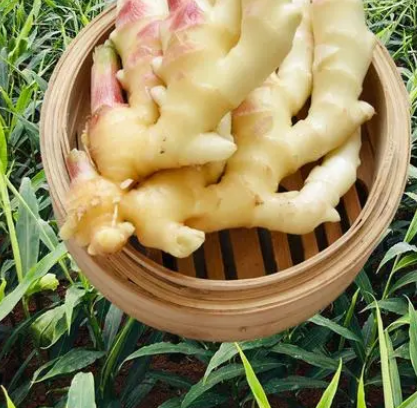
The difference between Lao Jiang and Xin Jiang lies in their growth periods: Xin Jiang grows for about 4 months, while Lao Jiang grows for about 10 months. If fresh ginger is left for a long time, it will turn into Lao Jiang, while Lao Jiang can be replanted to yield new ginger after a few months.
Gan Jiang is different from Sheng Jiang. Although Gan Jiang is also a type of ginger, its cultivation method differs from that of Sheng Jiang, giving it greater medicinal value.
Regular Sheng Jiang is cultivated by covering the sprouting shoots with soil, allowing it to grow larger roots, resulting in a peculiar shape but lower density and lighter weight.
In contrast, Gan Jiang is grown by simply planting the seeds and allowing them to develop naturally, resulting in smaller roots but with higher density and weight.
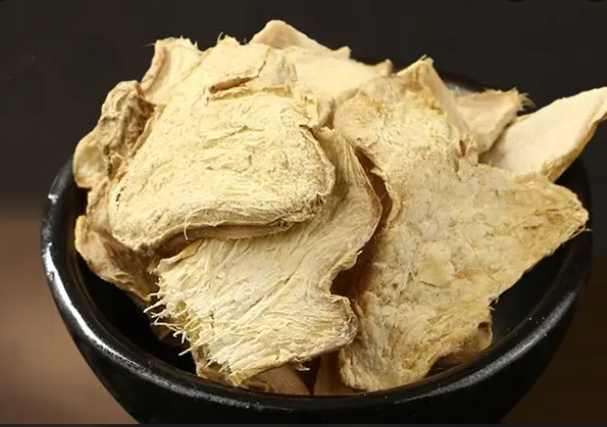
Gan Jiang is harvested in winter when the stems and leaves wither, cleaned of stems, roots, and soil, and then sun-dried or dried over low heat.
Previously, we mentioned that sun-drying Fu Jiang is best done with Lao Jiang. Lao Jiang is a type of Sheng Jiang, and even when dried, it can only be called “Gan Sheng Jiang” and not “Gan Jiang.” Additionally, it is worth noting that Sheng Jiang shrinks significantly when dried, while Gan Jiang, due to its higher density and lower moisture content, shrinks very little.
✦✦
02
Now that we have clarified the general classification of ginger, let’s discuss their uses.
In general, both Sheng Jiang, whether old or young, can be consumed daily and used medicinally, as they are typical examples of food and medicine sharing the same source. This is why we can find them in the market, while Gan Jiang is primarily used for medicinal purposes and is usually only available in pharmacies.
Gan Jiang and Sheng Jiang also differ in their effects.
Both Gan Jiang and Sheng Jiang have a spicy flavor, but Gan Jiang is significantly spicier than Sheng Jiang. Gan Jiang is considered very warming, while Sheng Jiang is mildly warming. The texture of Gan Jiang is also heavier than that of Sheng Jiang.
Substances with a light and thin aroma tend to disperse, while heavier substances can generate heat and provide stability. Therefore, Sheng Jiang excels at dispelling evil and promoting sweating, while Gan Jiang is better at warming the middle and restoring Yang. In other words, Sheng Jiang is often used to expel pathogenic Qi, while Gan Jiang is used to support righteous Qi.
Thus, we should not assume that sun-dried Lao Jiang can be used interchangeably with Gan Jiang in prescriptions or dietary therapies; they are not the same! Even many practitioners confuse this, and we had to consult experts in herbal processing to clarify this.
✦✦
03
Since Gan Jiang is generally used in prescriptions provided by doctors, we, as the general public, should focus on how to use Sheng Jiang correctly and effectively in our daily lives.
Sheng Jiang is warm in nature and spicy in flavor, entering the Lung (Fei), Spleen (Pi), and Stomach (Wei) meridians. It has the effects of releasing the exterior and dispelling cold, warming the middle and stopping vomiting, and warming the lungs and stopping cough. It is commonly used for the treatment of wind-cold colds, cold conditions of the spleen and stomach, cold vomiting, and cold coughs. Additionally, Sheng Jiang has certain detoxifying properties and can be used for the toxicity of raw Ban Xia (Pinellia ternata), raw Nan Xing (Arisaema), and food poisoning from fish and shrimp.
This is a commonality between Lao Jiang and Xian Jiang, but Lao Jiang is more effective than Xian Jiang.
Although the medicinal effects of Xian Jiang are not as strong as those of Lao Jiang, its taste is much better, being crunchy, tender, and juicy, making it more suitable for culinary uses. Therefore, fresh ginger is used in cooking, making soups, pickling, or when juice extraction is needed, such as in vinegar-pickled ginger, ginger stir-fried with meat, ginger minced and scrambled eggs (like crab), ginger minced fried rice, and ginger minced sweet and sour lotus root… In these dishes, ginger is treated like an ingredient and can be eaten directly, making it delicious, but its medicinal value is not as high as that of Lao Jiang.
Related Reading: This Traditional Health Food for Treating Winter Illnesses in Summer is a Must for Those with a Weak Cold Constitution.
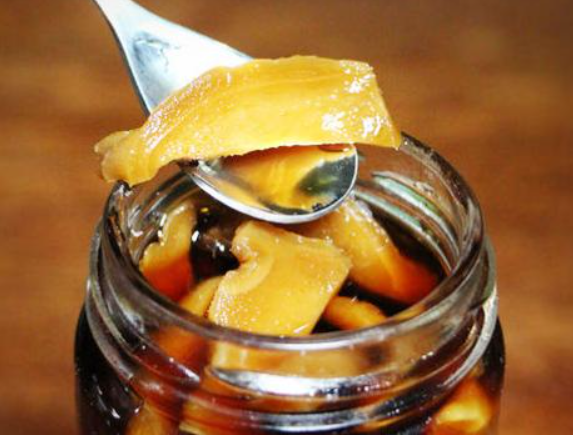
The taste of Lao Jiang is not as pleasant as that of Xian Jiang; it is spicier and drier, making it harder to chew and swallow, but its effects are stronger. Therefore, when we want to emphasize its therapeutic effects without needing to consume it directly or extract its juice, it is best to choose Lao Jiang instead of Xian Jiang, such as in ginger water, ginger syrup, ginger date tea, and scallion ginger water.
However, in terms of culinary value, while Lao Jiang is not suitable for direct consumption, it has its advantages in removing fishy odors and enhancing fragrance. Thus, it is most suitable to add a few slices of Lao Jiang as a seasoning in more elaborate dishes, such as soups or braised meats; using tender ginger would significantly reduce the effectiveness.
Sun-dried Fu Jiang, if pickled with sugar, uses tender ginger due to its high moisture content, which helps dissolve the sugar. Although it tastes sweet and delicious, its effects cannot compare to those of Lao Jiang.
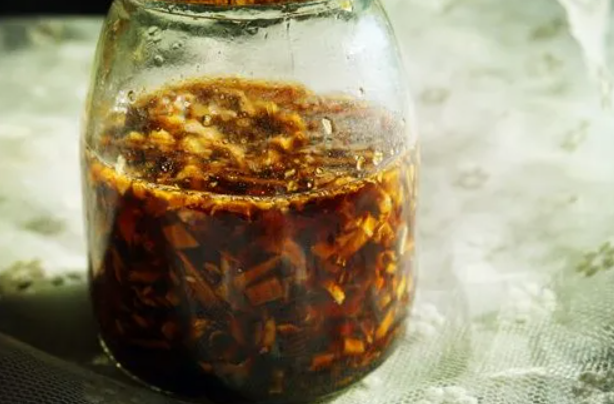
Sun-drying Lao Jiang into Fu Jiang will make it drier and spicier, but its effects will also be stronger. In other words, if we sun-dry Fu Jiang properly, it can be used in the same way as Lao Jiang, and its effects will be even better.
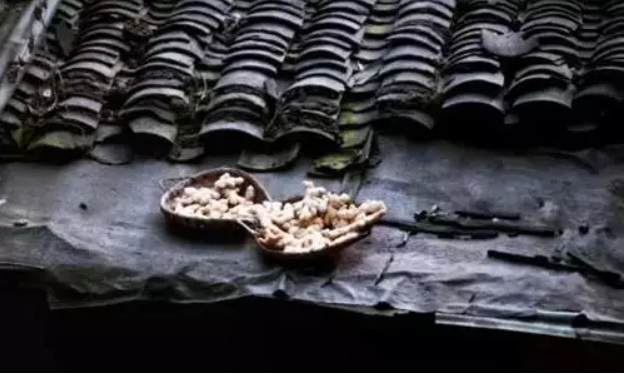
✦✦
04
In addition to the previously mentioned ginger syrup, ginger date tea, and scallion ginger water, I will introduce some more uses for Lao Jiang, both internal and external. These methods aim to utilize the warming properties of ginger, and since ginger skin is cooling, it should be peeled off.
1. Ginger Rice Tea
Effects: Dispels cold and dampness, induces sweating and releases the exterior, warms the lungs and stops cough, warms the stomach and stops vomiting.
Ingredients: Rice, Lao Jiang.
1. Peel and wash Lao Jiang, then slice it; wash and dry the rice.
2. In a frying pan, add the ginger slices and sauté over low heat.
3. When the moisture from the ginger is mostly gone, add the rice, adjust to medium-low heat, and stir continuously to avoid burning.
4. Once the rice turns yellow and the ginger is completely dry, turn off the heat and let it cool.
5. Store the sautéed ginger rice in a clean, sealed container. Brew it in water to drink daily.
6. The prepared ginger rice tea can be stored for up to a year in a dry environment.
2. Lao Jiang and Chen Pi Scallion Soup
Effects: Regulates abdominal pain due to cold.
Ingredients: 9g Lao Jiang, 12g Chen Pi (dried tangerine peel), 5 scallions, 5g pepper, 500ml water, decoct and serve.
3. Sheng Jiang and Ju Pi Soup
Effects: Regulates nausea and vomiting due to stomach cold.
Ingredients: 9g Sheng Jiang, 9g Ju Pi (dried tangerine peel), 500ml water, decoct and serve in two portions.
4. Foot Bath for Wind-Cold Cold with Headache and Cough
Ingredients: 100g Lao Jiang, 30g Ai Ye (mugwort), 30g Zi Su (perilla), 30g Jing Jie (schizonepeta). Add water to decoct, mix with a little vinegar, and soak both feet in warm water until the tops of the feet are slightly red. This is effective for wind-cold colds with headache and cough.
5. Hot Compress for Shoulder Periarthritis
Ingredients: 50g Lao Sheng Jiang, 30g scallion white, 15ml white wine, mash together, heat or microwave to apply to the affected area for 30 minutes, several times a day.
6. Hot Compress for Wind-Cold Bone Pain
Ingredients: 200g Lao Jiang minced, 30g Wei Ling Xian (clematis), 20g Ru Xiang (frankincense), 20g Bai Zhi (angelica), 20g Mo Yao (myrrh), grind into powder, mix and heat in a pot, then add 30g brown sugar and mix. Wrap in gauze and apply to the affected area, changing when cool. Use 1-3 times a day for 5-7 days as one treatment course.
(The above formulas are folk remedies)
Note: People with internal heat should avoid ginger.
Individuals with Yin deficiency: Symptoms include heat in the palms and soles, sweating in the palms, thirst, frequent dry mouth, dry eyes, dry skin, irritability, and poor sleep. Since ginger is spicy and warming, consuming it will exacerbate Yin deficiency symptoms.
Individuals with significant internal heat: This includes those with lung heat causing dry cough, stomach heat causing vomiting and bad breath, hemorrhoids with bleeding, and painful sores. If experiencing heat-related conditions, ginger should always be paired with cooling herbs to neutralize its warming properties.
In daily life, the principles of Traditional Chinese Medicine permeate every aspect of our lives. To use TCM to guide our lives and safeguard our health, and to learn more about TCM parenting concepts, feel free to scan the QR code to join our TCM lifestyle group:
